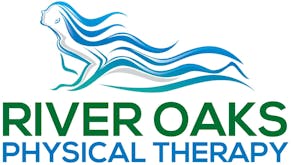One of the most common spinal conditions individuals may hear about is scoliosis. It’s a term medical professionals use to describe an abnormal, sideways curvature of the spine. The curvature can range from minor to severe and doesn’t cause pain in most instances, but it does need to be monitored by a physical therapist who can determine if the curvature is getting worse and provide treatment if needed.
The human spine is a complicated construction that’s subject to a variety of conditions that disrupt normal formation, shape and alignment. Scoliosis is the most common, causing areas of the spine to form a C or S shape. In the severest forms, it can result in gait disruptions and disability.
Minor curvatures often go unnoticed and many cases may be mistakenly attributed to poor posture or activities such as playing video games unched in awkward positions. A physical therapist will look for signs they’ve been specially trained to identify that include one side of the body appearing to be tilted or “higher” than the other. Girls are more likely to develop scoliosis than their male counterparts.
Scoliosis Variables
There are three types of scoliosis. The first is infantile scoliosis that’s found in children from birth to 3 years and the second is juvenile scoliosis that appears between ages 3 to 9. Adolescent scoliosis is the most common, accounting for approximately 80 percent of all cases. It typically appears between 10 and 18 years of age during the rapid growth that accompanies adolescence.
Congenital scoliosis is caused by a bone abnormality, while neuromuscular scoliosis is the result of a muscle or nerve condition and can accompany cerebral palsy and spina bifida. Degenerative scoliosis results from a traumatic injury or thinning of the bones. The most common type is idiopathic scoliosis that has no discernable cause.
The degree of curvature and whether or not it increases will determine the amount and types of physical therapy that will be needed. The rate of curvature may grow slowly, rapidly or stop and it’s the primary reason that youngsters must be monitored so closely. It’s never too early or too late to begin physical therapy and it can even be employed with infants.
There’s no way to determine the degree of curvature that will occur or who will develop scoliosis. Treatment and management plans are customized to the individual, factoring in the degree of curvature, the child’s age and when treatment commences.
Treatment options
The usual treatment for scoliosis is a back brace for youngsters that aren’t skeletally mature. It won’t reverse the existing curvature, but the goal is to stop the progression as the child grows. Once a patient has stopped growing, further curvature typically stops, too.
Wearing a brace that’s discreet is a primary concern for children who want to fit in with their peers. We offer custom made braces that can be removed for sports participation or worn only at night.
Surgery is the last resort of scoliosis treatment and we provide a variety of therapies for healing and rehabilitation. Our therapists provide recommendations for ergonomic and environmental adaptations that reduce the risk of injury and enhance mobility.Advice on pillows, mattresses and sleep aids and devices is available for appropriate support.
Customized orthotic devices are available to address differences in leg length when the curvature has affected posture and a gait analysis is effective for pinpointing the exact location of potential points of concern. Our therapists assist patients in the use, care and operation of mobility aids, along with posture improvement and new ways to move.
Therapeutic massage, electrical stimulation, ultrasound and aquatic therapies are available to ease pain, maintain health of soft tissues and enhance flexibility. Clinical Pilates, yoga and prescription exercise programs help develop stability, balance and strength.
An early diagnosis and close monitoring is critical in the treatment of scoliosis. Our practice offers extensive expertise and advanced technology to treat patients with scoliosis at all levels of curvature and address the special considerations of children.

